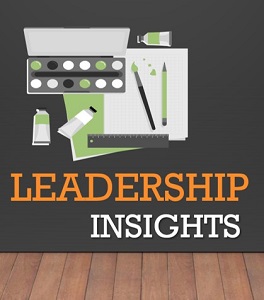
What Leaders can Learn from Artists

In her book, Uncharted: How to Navigate the Future, Margaret Heffernan noted that the “work of artists endures because they dare to imagine what they can’t see and allow their minds to leave predetermined paths.” I had the pleasure of interviewing Margaret on The Business of Government Hour to discuss her book and the many cogent leadership insights it offers. She counsels that though we may not all be artists we need their independence and stamina. Today’s leaders can learn much from such wisdom especially when leading in uncertaint times where independence seems so sorely missing and stamina so integral to long term success.
Heffernan continues that if artists have the capacity to make work that defies time, it is because instead of trying to force-fit a predetermined idea of the future, they have learned to live productively with ambiguity, to see it as a rich source of discovery and exploration. “Instead of trying to reduce complexity,” she points out, “they mine it, undaunted by contradictions and paradoxes.”
Recently, I came across an interview with a medical doctor turned sculptor named Dr. Gindi. The insights she shares dovetail perfectly with those outlined in Uncharted and resonate more so because they come directly from an artist. I wanted to highlight some of them all attributed to a very telling interview conducted by Grant Schreiber linked herein.
- Leaders [that] can perceive the world around them with a slightly detached outlook that considers themselves part of a broader reality, in a highly imaginary way. Then, on returning to reality, leaders can — like a sculptor’s mold that casts an artwork — authoritatively present bold, new ideas. With regular, critical self-reflection and creative destruction of the obvious, leaders can advance and create real value for many stakeholders — customers, employees, and investors.
- Leaders are like sculptors who give life to an otherwise supine clump of clay. Leadership is always non-linear in the beginning and transformational at the end. If leaders adopt a combination of thinking and feeling — a process that allows creative intuition into a business — they can achieve ongoing creativity and sustainability.
- Art can shock while it speaks to the observer…When explaining things to a broader audience, leaders should take care not to appear to be promoting a fantasy, but rather, persuading and enlightening.
- Real leaders strive to create value that lasts a very long time — even forever. They should inspire others to launch themselves rhapsodically into the future while remaining predicated in the present. Leaders need to sail ahead, testing the winds, currents, and tides of these challenging times.
“Working in the interstices of uncertainty, Heffernan writes, “is how [artists and leaders] forge their identity, making future works and worlds that they can’t see before they get there—and which they may only dimly understand on arrival.” She underscores they are the opposite of the “hapless executives too terrified by future scenarios to think for themselves”. In this, artists have much to teach us about how we ourselves could address the future with imagination and independence.



